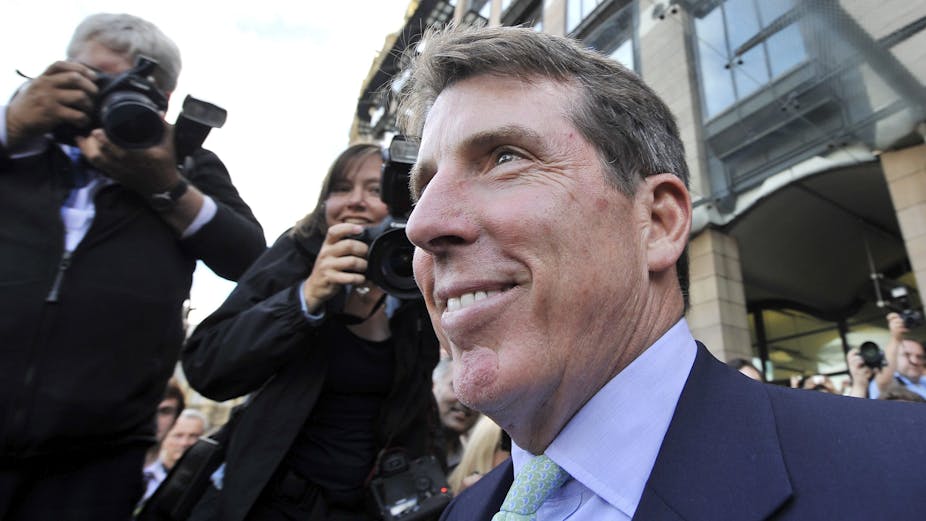As the Deputy Governor of the Bank of England, Paul Tucker, prepares to give evidence to the Treasury Select Committee, he will be mindful of the insult thrown at Bob Diamond, the recently crestfallen former chief executive officer of Barclays by John Mann MP this week. The banker, it was alleged, was either “complicit, grossly negligent or incompetent” in failing to prevent the manipulation of the London Interbank Offered Rate (LIBOR). As the investigation mutates, the limits of a narrative based on greedy bankers is increasingly exposed as incomplete at best. The as yet untold story centres on whether regulatory authorities, aware of significant limitations associated with allowing traders to set rates, not only did little to stop it but, in effect, condoned the behaviour?
To date, Barclays has invested $100 million in a three-year internal investigation, which included the review of 22 million documents from over 200 custodians, over one million audiofiles and the conducting of 75 interviews. This material was, in turn, handed over to regulatory authorities in the United Kingdom and the United States, where its selective release has made for familiarly depressing reading. Email exchanges point to an elaborate deception. It extends far beyond the bank itself, with traders apparently colluding to help artificially change the LIBOR to facilitate favoured clients or counterparties. Taken together, they generate a narrative that suggests narrow short-term self-interest trumped concern for the reputation of the bank; a complete disregard of the impact of the deception on the integrity of the daily figure used to calculate global interest rates; and ignorance of a long-term cost (for all those implicated) in the form of a class action from those who will, inevitably, charge that each infraction caused real economic loss.
At this stage, the potential costs are incalcuable.
The problem now facing British regulators and Mr Tucker in particular is whether a similar charge can be placed against regulatory authorities who, faced with the tumultuous market conditions in October 2008, may have misled the market by failing to take decisive action to stamp out abuse because of structural or political calculations. The LIBOR scandal, therefore, exposes a structural disconnect between the imperatives governing prudential and market conduct regulation. It also highlights the ongoing risk that the capacity to intervene may be derailed by short-term political considerations that have longer-term tail risks, which extend to an undermining of the legitimacy and authority of the regulatory agency and the market it is charged with overseeing.
The issue centres on the interpretation of a note written by Mr Diamond recounting a conversation with Mr Tucker on 29 October 2008. The conversation took place at the height of the uncertainty caused by the collapse of Lehman Brothers. According to the note, “Mr Tucker reiterated that he had received calls from a number of senior figures within Whitehall to question why Barclays was always toward the top end of the Libor pricing. His response was: ‘you have to pay what you have to pay.’ I asked if he could relay the reality - that not all banks were providing quotes at the level that represented real transactions. His response: ‘Oh, that would be worse.’ The note continues that ‘Mr. Tucker stated the level of calls he was receiving from Whitehall were "senior” and that while he was certain we did not need advice, that it did not always need to be the case that we appeared as high as we have recently.“
The note was copied to a senior investment banker, Jerry del Missier, who, according to Barclays (page 2 of its submission to the Treasury Select Committee), without instruction from either Mr Diamond or the then CEO, "concluded that an instruction had been passed down from the Bank of England not to keep LIBORs so high and he therefore passed down a direction to that effect to the submitters”.
In its defence, Barclays highlights three factors. First, the instruction had limited effect because the bank’s valuations to LIBOR were so high that they were excluded from the rate. Second, market conditions improved “within days”. Third, no enforcement action has been taken by the FSA against Mr del Missier, who was subsequently appointed Chief Operating Officer, an appointment vetted by the Financial Services Authority (and who resigned in the aftermath of the Diamond departure following a tenure of just under a week). None of these issues was effectively addressed in the testimony provided by Bob Diamond, in part because there was no sustained questioning of who these sources were.
Mr Tucker is poised to give evidence in coming weeks to clarify the context of the conversation. At stake is more than the reputation of a single central banker. The hearing provides an opportunity to delve into the dynamics of the relationship between the financial services, political and regulatory elite and the complexities associated with crisis-management and the dangers of using quick political fixes to manage intractable systemic conflicts.
More than two millennia ago, the Roman poet Juvenal asked 'Quis Custodiet Ipsos Custodes? (Who Will Guard the Guardians?). It remains the unresolved question in regulatory politics. Finding an answer in the context of financial services regulation has never been more important. The LIBOR scandal takes us one step closer. It will make for uncomfortable reading.
Justin O'Brien writes a column for The Conversation, The ethical deal, and is director of the UNSW Centre for Law, Markets and Regulation portal, where this story also appears.

